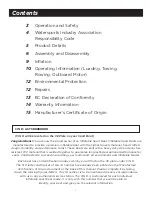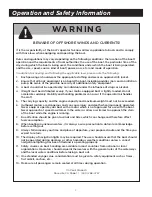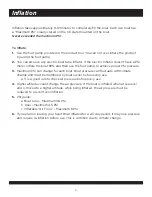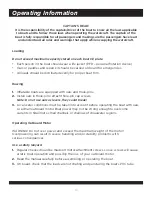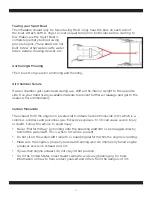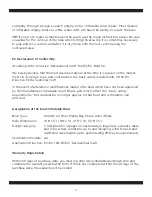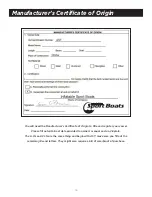
10
Operating Information
CAPTAIN’S READ!
It is the responsibility of the captain/driver of the boat to know all the laws applicable
to boats and to follow those laws when operating the watercraft. The captain of the
boat is fully responsible for all passengers and making sure the passengers have read
and understood all rules and warnings that apply while occupying the watercraft.
loading
Do not exceed maximum capacity stated on each boat CE plate.
•
each person in the boat should wear a life jacket (PfD – personal flotation device)
•
oars or paddles and repair kit should be carried on board for emergencies.
•
All loads should be distributed evenly for proper boat trim.
Rowing
1.
Inflatable boats are equipped with oars and thole-pins.
2.
Install oars in thole-pins; attach thole-pin cap screws.
Note: Do not use oars as levers, they could break!
3.
local water conditions must be taken into account before operating the boat with oars
or a small outboard motor. boat power may not be strong enough to overcome
currents in tidal inlets, small channels or shallows of shoalwater regions.
Operating Outboard Motor
WARnIng! Do not over power and exceed the maximum weight of the motor!
overpowering can result in severe handling and/or stability problems with
serious consequences.
Use a safety lanyard
1.
Regular checks should be made on motor attachment screws. loose screws will cause
erratic boat operation and possibly the loss of your outboard motor.
2.
Read the manual carefully before assembling or operating the boat.
3.
on board, check that the loads are not chafing and puncturing the boat’s PVC tube.


